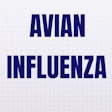
Outbreaks of Highly Pathogenic Avian influenza (HPAI) returned in 2022, with impacts felt in poultry flocks across the U.S. As of March 8, 2022, two commercial layer flocks have been infected with HPAI: one in Delaware and the other in Maryland.
Because the situation can easily cause concern for producers, Dr. Carol Cardona, Pomeroy Chair in Avian Health, University of Minnesota, shared insights and recommendations concerning the recent HPAI findings with Egg Industry Insight.
“I just want to make sure everybody knows that biosecurity can work, it will work, but they have to commit to it. It's up to the industry to do this. Prevention is completely on their shoulders. No one else can do this but them,” Cardona said.
2022’s HPAI virus
The strain of HPAI found in North American commercial poultry flocks this year have been classified as Eurasian 2.3.4.4b, explained Cardona.
“We don’t know the virulence yet, but there are definitely differences between 2022’s outbreak and 2015’s outbreak. In 2015, we could see that turkeys were more susceptible to HPAI. Because turkeys have a specific distribution across the U.S., we saw pockets of susceptibility across the country. Once the turkeys were infected with viruses that came from wild birds, they adapted that virus so that it could grow in chickens,” she stated.
“The difference in 2022 seems to be that the virus doesn’t need the adaptation from turkeys, its able to be transferred directly to chickens from wild birds. Chickens and turkeys are equally susceptible in this situation, meaning the risk could be greater.”
Horizontal transfer or wild birds?
According to Cardona, if HPAI is currently spreading from farm to farm, it would most likely be through “local area spread” which comprises aerosols, insects, rodents, small birds or people not involved in poultry production, such as the mailman.
“Transmission through local area spread can result in contamination of the perimeter buffer area, which leads to an infection. The other thing to consider is that were not seeing HPAI in every area that has wild birds. The odds of wild birds infected with HPAI bringing it to a farm nearby is a greater risk compared to a farm located further away,” she said.
Determining if infections are a result of an introduction or a local area spread can be difficult, so Cardona recommends that producers protect against both.
Biosecurity recommendations
First, don’t panic. Biosecurity really can prevent HPAI, but you must take it seriously, she explained.
“Having visitors is not recommended. People crossing the line of separation (the walls of the poultry house) and the perimeter buffer area (the outer boundaries around the poultry houses) correctly is important, so review the line of separation procedure for your farm and ensure everyone understands it.”
Third party garbage disposal employees can be a source of contamination. Therefore, ensuring they stay outside of the perimeter buffer and are making a one-way trip to the garbage bins, not back and forth, is critical, said Cardona.
“Often, dead infected wild birds are thrown into the trash in communities. People should understand, especially early in an outbreak like this, that just because you’re outside of a control zone, does not mean you have no risk. Many HPAI cases that have occurred have been outside of a control area. That's because of the spread with wild birds.”
Additionally, a simple and effective biosecurity plan that they can immediately implement, as well as having all employees know the signs of HPAI, is critical. “If your birds are showing clinical signs of HPAI, you should close your farm, keep people out of the barns and dead birds in the barns. Then communicate to your veterinarian and your State Board of Animal Health.”


















